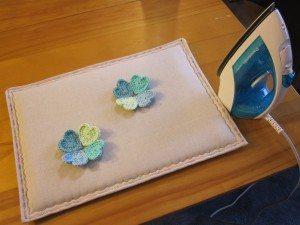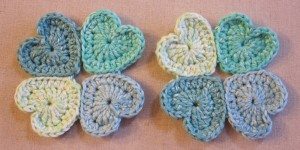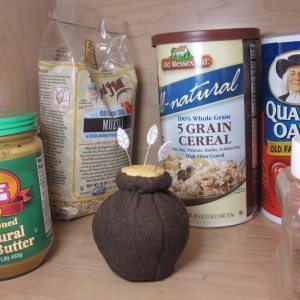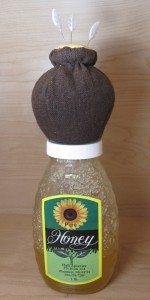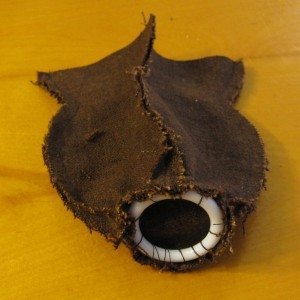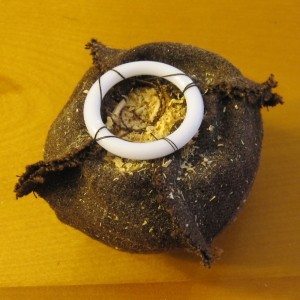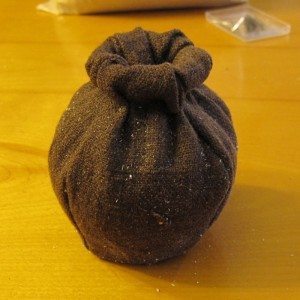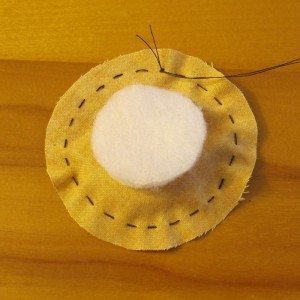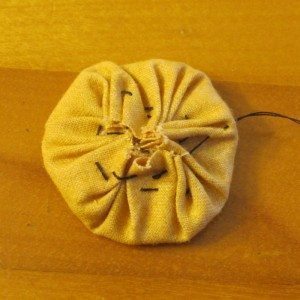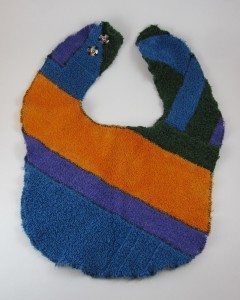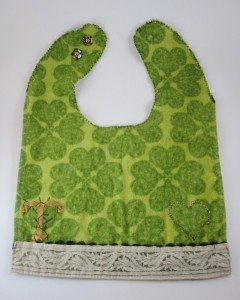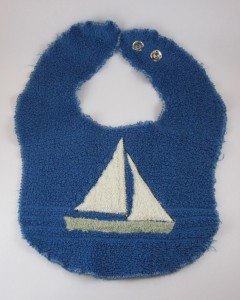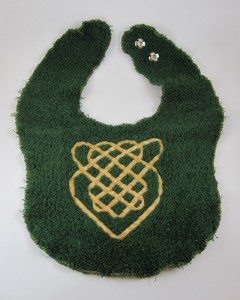Last week we discussed one of my Christmas gifts, and this week’s post was precipitated by another: a new ironing board cover. My old one was scorched and stained, prone to iron dents, and had never fit particularly tightly to the board. But what to do with it when I removed it? It is difficult for me to take something so large and just throw it out.
So I didn’t. I cut off the strip of little chickens that had drawn me to it in the first place, down at the wide end of the board, and then the largest piece I could get between that and where the board narrows.
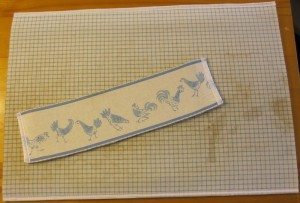
I covered the large piece with linen, and attached linen to the back of the small piece. Then I folded the large piece in half and stitched all the way around twice, with the same variegated thread and two different decorative zigzags. The small piece got wide single fold bias tape stitched to the front, folded around at each end to the back, then the long edge folded to the back and stitched down.
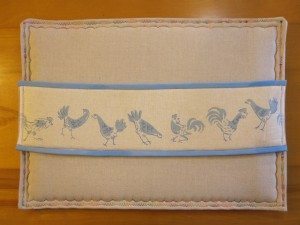
The larger board is the size of a generous placemat, perfect for pressing small crochet pieces, such as these coasters made out of the medium size of Planet June’s Love Hearts.
